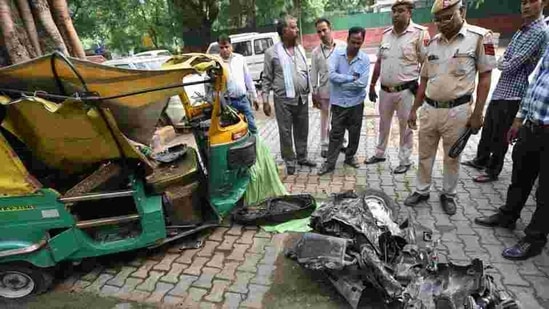Road crashes in India hike poverty, poor suffer more deaths: World Bank report
The report also brings out the sharp rural-urban divide and the disproportionate impact on women. Women bore the burden of crashes across poor and rich households, often taking up extra work, assuming greater responsibilities, and performing caregiving activities after a crash.
More than 75% of poor households in India reported a decline in their income as a result of a road traffic crash. The financial loss for the poor amounted to more than seven month’s household income, while it was equivalent to less than one month’s household income for rich households, a World Bank report released on Saturday noted.

The report titled “Traffic Crash Injuries and Disabilities: The Burden on Indian Society”, was released by Union transport minister Nitin Gadkari on Saturday. The report highlights the disproportionate impact of a road crash on poor households that pushes them into a vicious cycle of poverty and debt. It sheds light on the links between road crashes, poverty, inequality, and vulnerable road users in India.
Post-crash impact among Low Income Households is more severe compared to High Income Households with incidence of fatality among poor households as high as 44% in rural areas compared to 11.6% in urban areas, the report by the World Bank and Save Life Foundation on the socio-economic burden of road crashes released by Gadkari on Saturday noted.
The report stated that Lower Income Household (LIH) reported twice the numbers of deaths post-crash vis-à-vis High Income Household (HIH) adding that victims from LIH and rural areas are also twice more likely to suffer a disability after a crash than their HIH counterparts.
Overall, the post-crash impact was more severe for LIH in low capacity states compared to HIH in high capacity states, it noted.
“The socio-economic burden of road crashes is disproportionately borne by poor households. The decline in total household income was sharper among LIH (75%) than HIH (54%). The severe impact of decline in income was highest among LIH in rural areas (56%) compared to LIH in urban areas (29.5%) and HIH rural (39.5%), and cases where victims died as well as where victims were males,” it said.
The report also brings out the sharp rural-urban divide and the disproportionate impact on women. The survey shows that the income decline for low-income rural households (56 per cent) was the most severe compared to low-income urban (29.5 per cent) and high-income rural households (39.5 per cent). Women bore the burden of crashes across poor and rich households, often taking up extra work, assuming greater responsibilities, and performing caregiving activities after a crash. About 50 per cent of women were severely affected by the decline in their household income after a crash. About 40 per cent of women reported a change in their working patterns post-crash, while around 11 per cent reported taking up extra work to deal with the financial crisis.
Within households, women bear the brunt of caregiving activities post-crash, leading to a double burden of labour and mental load and exacerbated inequality of opportunities in returning to livelihoods and income generating tasks, it noted.
India tops the world in road crash deaths (WHO, 2018), with more than 400 fatalities per day. India has 1% of the world’s vehicles but accounts for 11% of all road accident deaths and 6% of total road crashes, according to the ministry of road transport and highways.
In the last decade alone, road crashes have killed 1.3 million and injured over 5 million in India.
“The risk of a road crash in low-income countries is three times higher than compared to that in high-income countries. Not only does it lead to untold and unaccounted for suffering and loss for victims and their families, but also, it drains the GDP of countries by claiming millions of economically productive young lives.
Road crash deaths in India, which are the highest in the world, are a burden on its demographic dividend and have a tangible impact on poverty. The disproportionate impact can be gauged by the fact that with only 1 percent of world’s vehicles, India accounts for 11 percent of all crash related deaths or expressed different, a crash death happening every four minutes,” said Junaid Kamal Ahmad, Country Director, India World Bank.
World Bank commissioned a survey-based assessment study in association with the Save LIFE Foundation (SLF)– a national non-governmental organization focused on road safety. Based on the survey data collected from four Indian states – Uttar Pradesh, Bihar, Tamil Nadu and Maharashtra, the research assesses the social, financial, gender, and psychological impacts of road crashes on poor and disadvantaged households.
The study quantifies the differential financial impact of RTIs on poor disadvantaged households by comparing a test sample of victims and their family members from Low-Income Households (LIH, i.e., the bottom 40% of the population by per capita income) with a control sample of High Income Households (HIH, i.e., the top 10% of the population in terms of per capita income). It also reveals the gendered and psychological impact of crashes, a subject that has been hitherto unacknowledged in previous studies, the report noted.
India is also a signatory to the United Nation’s Brasilia Declaration with the target of reducing road fatalities by 50% by 2020. Union transport minister Nitin Gadkari also said the government aims to bring down road accidents and its related deaths down by 50 per cent before 2025.






